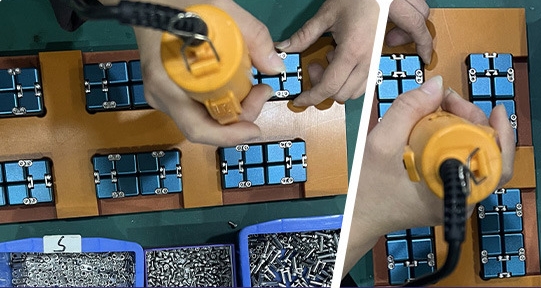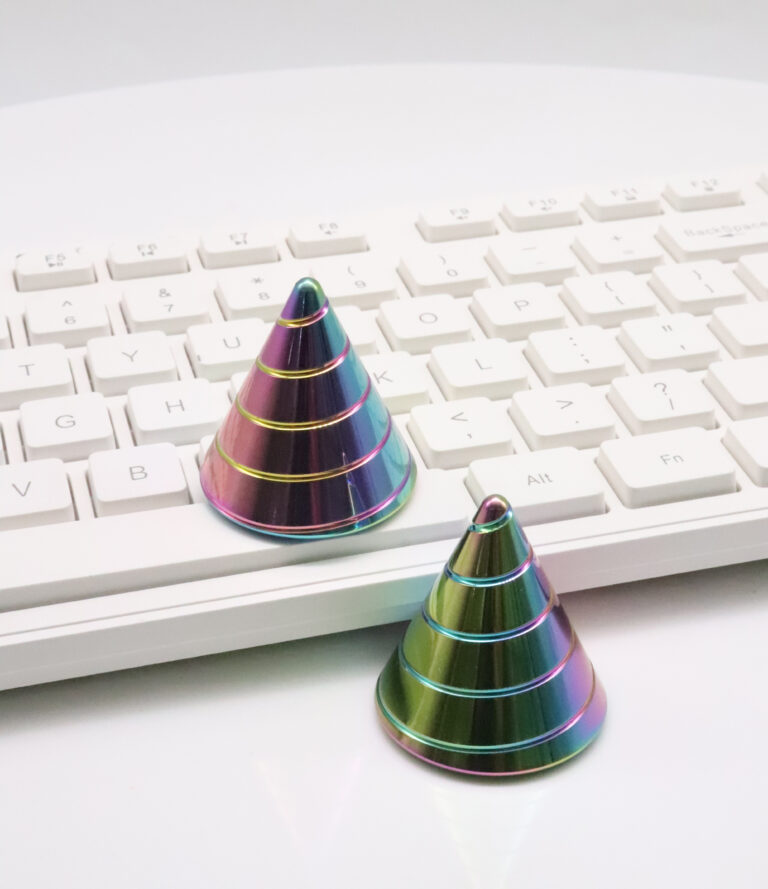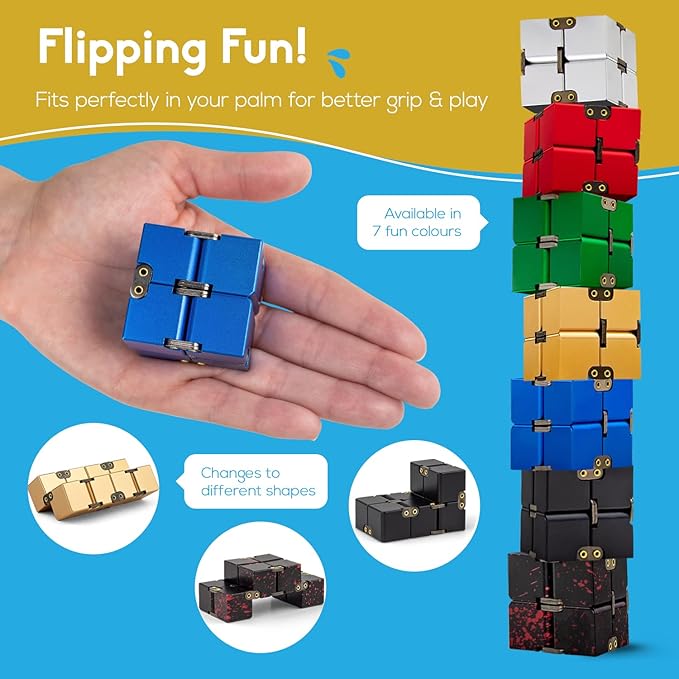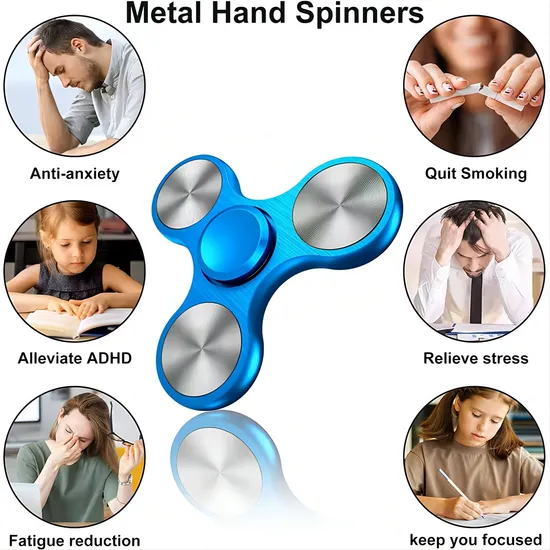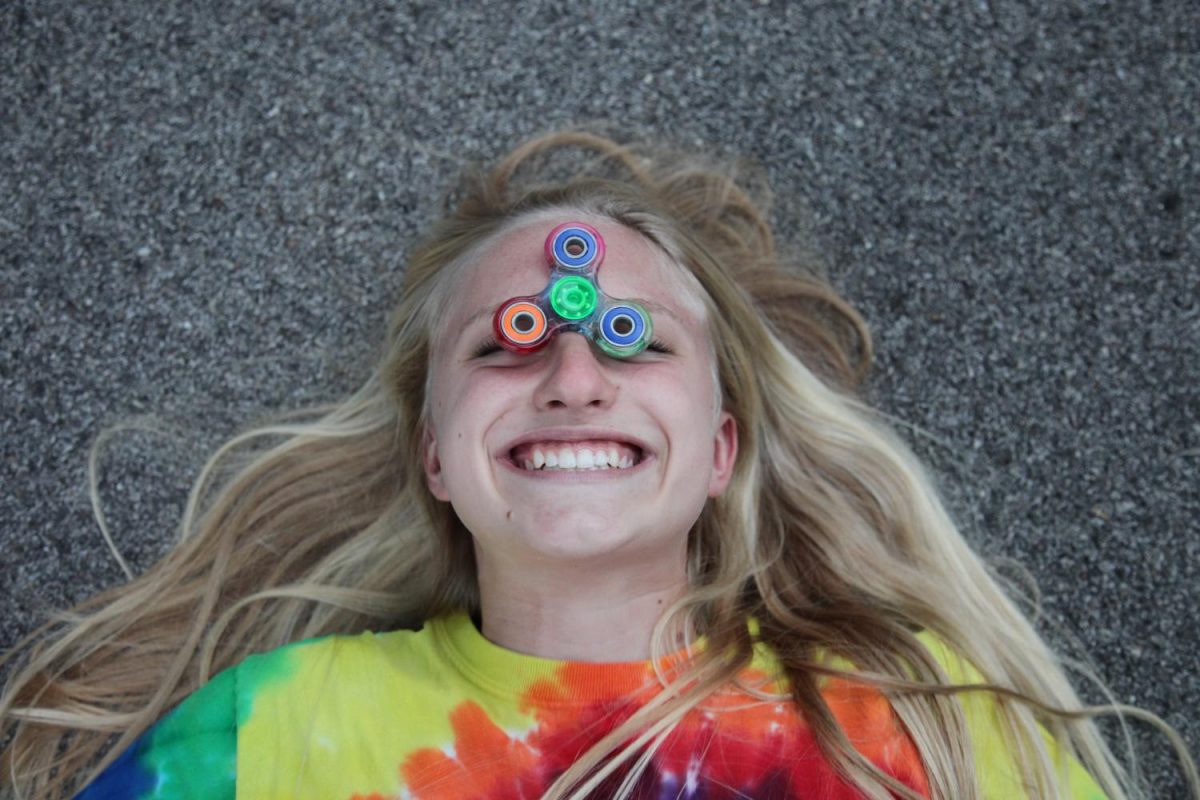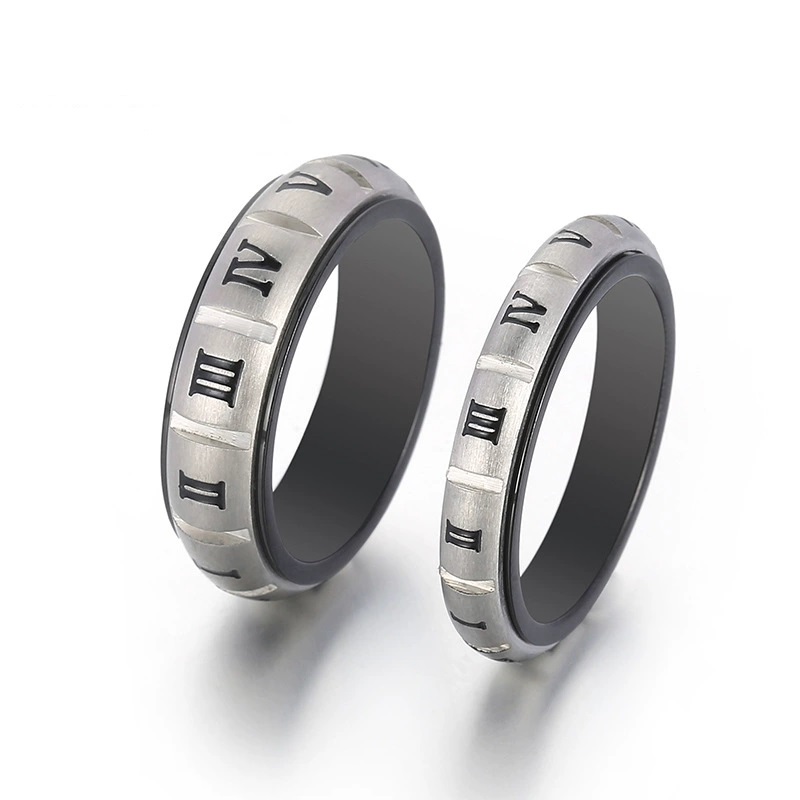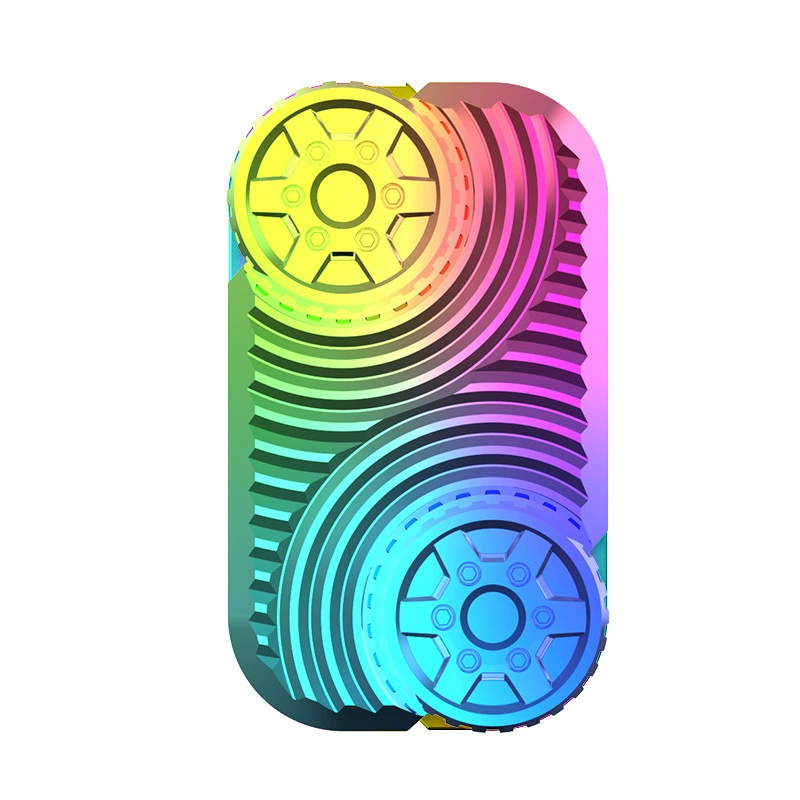-
Shenzhen City, GuangDong Province, China

Do Fidget Toys Help With ADHD?
Fidget toys are everywhere! Lots of kids and grown-ups use them. Some people think these toys help kids with ADHD. ADHD means it is hard to sit still. It is hard to pay attention.
But do these toys really work? Or are they just fun things that make noise and distraction?
This is a big question. Some smart people have looked at this. Some say yes, they help! Others say no, they make things worse. Let’s look at what we know.
We will talk about:
- What ADHD is like.
- Why kids with ADHD might fidget.
- What science says about fidget toys.
- Good things about these toys.
- Bad things about these toys.
- The best fidget toys to try.
- How to use them the right way.
This is for ADHD management. It is about sensory stimulation. It is about focus improvement.
Table of Contents
What is ADHD? Why Do People Fidget?
ADHD stands for Attention Deficit Hyperactivity Disorder. It is a neurodevelopmental disorder. This means the brain works a bit differently.
Kids with ADHD might:
- Move around a lot (hyperactivity reduction is hard).
- Have trouble staying in their seat.
- Talk a lot.
- Find it hard to wait their turn (impulse control is tough).
- Lose things often.
- Daydream a lot (attention span can be short).
- Have executive function challenges. This means planning and doing tasks is hard.
- Have emotional dysregulation. Feelings can be very big.
Fidgeting is moving your body a little bit. Tapping fingers. Shaking a leg. Twirling hair. Why do people do it?
Sometimes, the brain needs more input. It needs something to feel or do. This is called sensory processing. Fidgeting gives the brain tactile feedback. That is a fancy way to say “touch feeling”. This tactile stimulation can help some people feel calm. It can help them focus.
One smart person, Dr. Dustin Sarver, looked at this. He studied ADHD hyperactive movements. He found that for some kids with ADHD-C (that means Combined type), moving helped them do hard cognitive performance tasks. Moving might wake up the brain parts needed for focus. It helps with on-task behavior. It’s like their body needs subconscious movements or directed movement to think better. This is part of cognitive load theory. It’s not just random wiggles. It could be behavioral coping.
So, fidgeting is not always bad. Sometimes it is the body’s way of trying to help the brain. It can be one of the self-regulation strategies. It can be a displacement activity. It is different from just being distracted. This need for movement is sometimes called stimulate-seeking behavior.
What Does Science Say? Do Fidget Toys Work?
This is where things get tricky. There is not one simple answer. Some studies show good things. Some show bad things. There are research gaps. We need more empirical studies.
Good Signs:
- Some teachers and parents see kids feel less worried when using sensory toys. This is anxiety reduction. It helps with stress relief.
- Using hands for repetitive motions might help block out other distractions. This could improve academic focus.
- Toys give tactile feedback. This can be calming. It’s like therapy for kids.
- Dr. Dustin Sarver‘s work suggests movement helps some kids think. Fidget toys give an outlet for energy. This supports hyperactivity and learning.
- HealthMatch.io notes that for kids with ADHD and Autism Spectrum Disorder (ASD), or Sensory Processing Disorder (SPD), tactile fidget toys help with self-regulation. This relates to sensory integration, a key idea in occupational therapy. Tools like Theraband or Kinetic sand are used in pediatric therapy.
Not-So-Good Signs:
- One study looked at fidget spinners. These are the toys with ball bearing devices. A study by Schecter et al., 2017 found spinners made attention worse for some kids.
- Another study found fidget spinners did not help kids stay on task in class. They might even be classroom distractions.
- A different study said spinners could distract the person using them, but maybe not others nearby.
- There is not much clinical evidence proving fidget toys make academic performance better in the long run. A lot of support is based on anecdotal benefits (what people say happens). We have limited attention research on this topic.
What Does This Mean? It means fidget device benefits are not guaranteed. It depends on the child, the toy, and the situation. Some toys, like loud spinners, might be too much stimulation modulation.
Good Things About Fidget Toys for ADHD
Even if science is mixed, fidget toys can help some kids with ADHD. Here are some benefits:
- Less Restless: They give hands something quiet to do. This helps manage hyperactive movements. It provides stimulus control.
- Better Focus (Sometimes!): For tasks that are boring or long (like listening to a story), a quiet fidget can help keep the brain awake. It helps task persistence and focus retention.
- Calm Down: The feeling of the toy can be soothing. This is stress management. It helps with emotional regulation. Think of stress balls or soft putty therapy. It’s a therapeutic coping tool.
- Sensory Needs: Kids with ADHD often have sensory processing needs. Fidget toys give sensory stimulation. This could be proprioceptive input (feeling body position) or tactile input. Think about a sensory diet – a plan of activities to help sensory needs. Some kids might have tactile defensiveness (not liking touch), so the right toy is important.
- Quiet Outlet: A good fidget toy lets kids move without bothering others. This is key for classroom accommodations. They are quiet classroom tools.
These therapeutic tools can be part of ADHD symptom relief. They are alternative interventions. They are not a cure, but they can be helpful concentration aids or study aids.
Bad Things About Fidget Toys
But, there can be problems too. Here are some drawbacks:
- Distraction: Some toys are too fun! Kids might play instead of work. Noisy toys (fidget spinners) or messy toys (slime) are often banned in schools. They cause distraction reduction failure. They impact visual-auditory focus.
- Not Learning Skills: If a child only uses a toy to sit still, they might not learn other ways to manage their impulse control or attention. Behavioral therapy or cognitive-behavioral strategies teach these skills. Fidgets should be a tool, not a replacement. They should support cognitive adjustment.
- Looking Different: Some kids might feel shy using a fidget toy if other kids make fun of them. This is about social stigma.
- Not All Toys Work: As we saw, fidget spinner effectiveness is low for focus. Choosing the wrong toy might make things worse. Task complexity matters too; a toy might help with easy tasks but hinder hard ones. Mind-wandering reduction is not guaranteed.
- Over-reliance: Relying too much on subconscious movements via toys might hinder learning enhancement from other methods.
It’s important to use non-disruptive fidgeting tools.
Top 5 Fidget Toys for ADHD (That Might Actually Help)
Okay, so which fidget toy varieties are best? Based on what we know about sensory input and low distraction, here are some good choices:
- Fidget Cubes: These small blocks have buttons, switches, and dials on each side. They offer quiet, varied tactile stimulation. You can find a cool Metal Fidget Cube Spinner too. They help with fine motor skills.
- Pop-Its: These silicone toys have bubbles you can push. They make a soft pop. They are quiet and keep hands busy. Good for stimming behaviors.
- Tangle Toys: These twisty, connected curves can be moved and shaped. They are silent and good for mindful fidgeting. Tangle Creations is a known entity.
- Chewable Jewelry (Chewelry): For kids who need oral-motor tools, necklaces or bracelets made of safe silicone can help. This gives proprioceptive input to the jaw. Check places like Stimtastic.co for options.
- Sensory Strips / Putty: Textured strips stuck to a desk or a small tub of therapy putty offer quiet tactile feedback. Putty therapy is common in occupational therapy. Kinetic sand is another option.
Other ideas: Fidget rings (wearable and discreet), stress balls, Monkey noodles (stretchy strings), puzzle balls, infinity cubes like the Aluminum Infinity Cube, magnetic cube puzzles, or even an ONO Roller. Some Focusfied products are designed for this. Dynamic seating (like wobble chairs) is another form of movement-based focus. For desks, simple things like a Newton’s Cradle or kinetic desk toys like the Mezmoglobe Luna Kinetic Desk Toy might work for some.
How to Choose and Use Fidget Toys the Right Way
Just giving a child a fidget toy is not enough. Here’s how to make them work:
- Ask the Child: Let them try different fidget toy varieties. What feels good? What helps them focus? What is too distracting?
- Set Rules: Explain it is a “tool, not a toy.” Use it for work time (like homework, listening). Not for playtime. This helps with task persistence.
- Think About the Place: A toy for home might be too noisy for school. Choose quiet classroom tools for learning time. Non-disruptive fidgeting is key. Think about spinner design – some are quieter.
- Combine with Other Help: Fidget toys work best with other ADHD management plans. This includes:
- Behavioral interventions: Learning skills.
- Occupational therapy strategies: Working on sensory integration or motor skill development. Maybe a sensory diet. AOTA (American Occupational Therapy Association) supports this.
- School help like 504 Plans or an IEP (Individualized Education Program). These list classroom accommodations.
- Watch How It Works: Does the toy actually help focus improvement? Or does it make things worse? Be ready to change toys or stop using them. Check academic engagement.
- Talk to Teachers: Work with the school. Explain why the child needs a fidget tool. Get their ideas too. This helps avoid problems.
Using fidgets needs directed movement and purpose. It’s part of behavioral coping.
Common Questions (FAQs)
Do fidget toys fix ADHD? Can they replace medicine?
A: No. Fidget toys do not cure ADHD, which is one of the neurodevelopmental disorders. They do not replace medicine or therapy. They are just one small tool for ADHD symptom relief. Think of them as study aids or concentration aids.
Are fidget spinners always bad?
A: Studies show they often distract more than help, especially in class. But some people might find a quiet spinner helpful when alone. It depends on the person and the spinner design. Check out desk spinners like the Windmill Desk Spinner Toy.
Can grown-ups with ADHD use fidget toys?
A: Yes! ADHD affects adults too. Many adults find fidget tools help them focus in meetings or at their desks. Quiet, professional-looking fidgets like fidget rings, stress balls, or desk toys like Newton’s Cradle or Mezmoglobe products work well. Fidgetland makes minimalist options. Mental health tools are for all ages. They can help with anxiety disorders too.
What about kids with Autism or Sensory Processing Disorder?
A: Yes, fidget toys are often very helpful for kids with ASD or SPD. They help with sensory regulation, stimming behaviors, and reducing sensory overload. Tools like chewable jewelry, weighted blankets, compression clothing, body socks, vibrating pillows, or sensory swings are used in therapeutic settings. Therapy for kids often includes these. DYSPRAXIA (trouble with movement) can also co-occur, and some tools help motor coordination.
Are these toys the same as stimming?
A: Stimming behaviors (self-stimulating behaviors like rocking or hand flapping) are often natural ways people regulate. Fidget toys can be a more focused or socially accepted way to get similar sensory stimulation.
So, Do They Help? The Final Word
Fidget toys can be helpful tools for some people with ADHD. They can give needed sensory input, help manage restlessness, and sometimes improve focus. They are one part of ADHD management.
BUT:
- They are not magic.
- They don’t work for everyone.
- The wrong toy (like a noisy spinner) can make things worse.
- They need to be used the right way, as a tool for focus, not just play.
The best approach?
- Try quiet, simple fidgets first.
- See if they really help with concentration and calmness.
- Use them alongside other strategies and therapies.
- Talk to doctors, therapists (occupational therapy), and teachers.
Think about the goal: focus improvement, hyperactivity reduction, stress relief. Choose tools that match. From fidget cubes to putty therapy, find what fits.
Ready to try? Think about the task, the person, and the place. Choose wisely!

